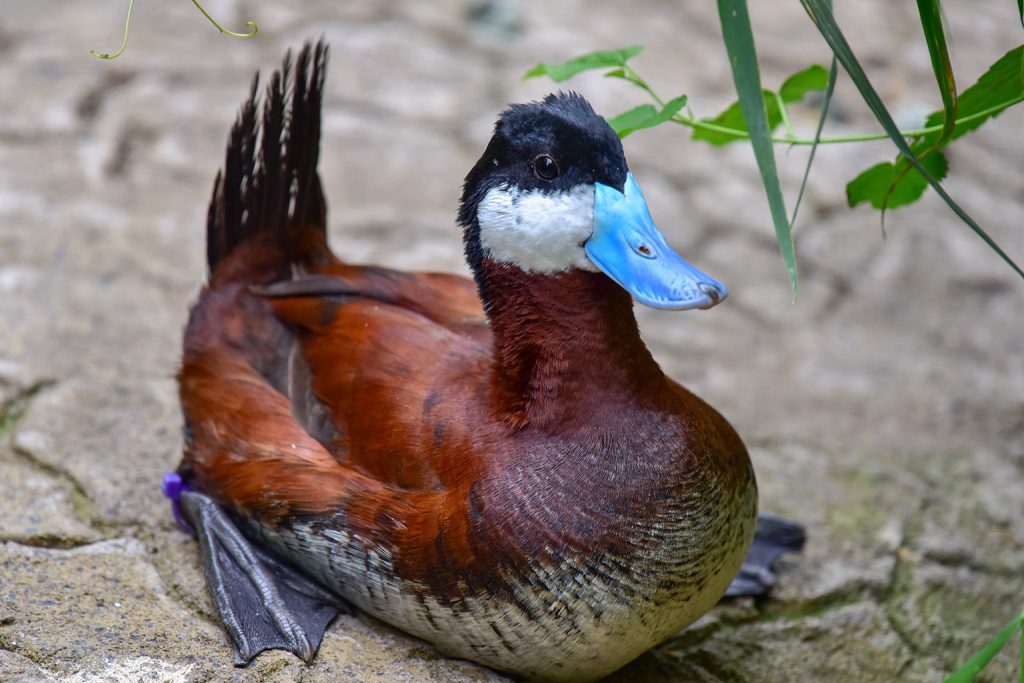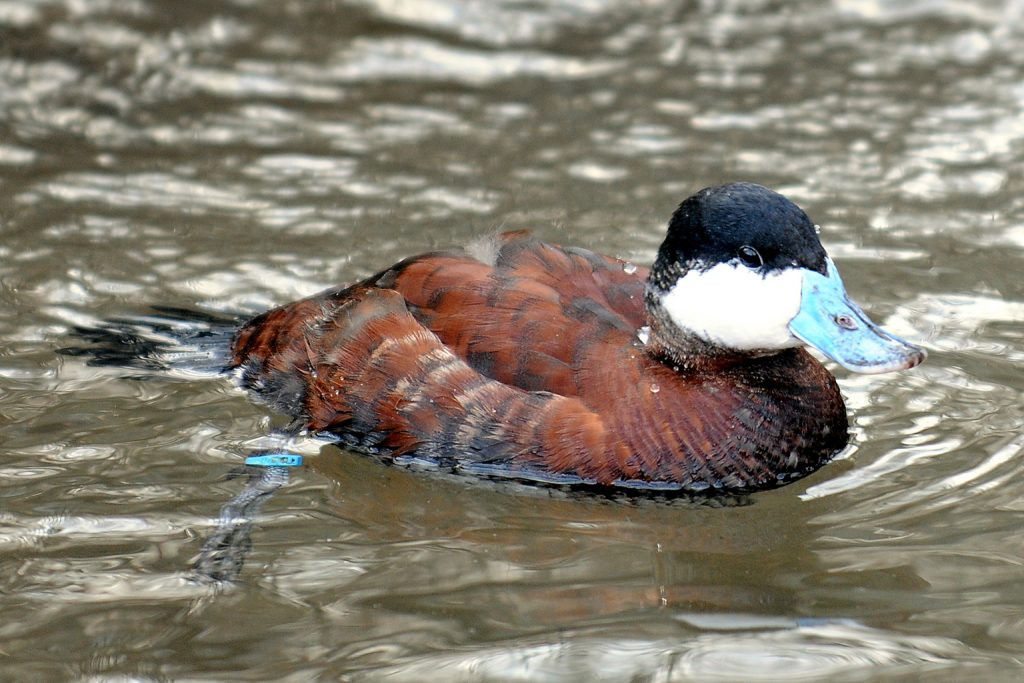Overview
“Where I live”
The ruddy duck is a strictly New World species that spends its summer breeding season in northwest “prairie pothole” country. This territory stretches from the northern Great Plains states up into Canada. Ruddy ducks winter on the Pacific and Atlantic coasts, across the southern United States, and into Mexico and Central America. They can be spotted year-round on the Chesapeake Bay, but much more so during the winter months.
“How I live there”
Ruddy ducks are often found in tight flocks. They are diving ducks that feed on pondweeds, algae, wild celery, and seeds of sedges, smartweeds, and grasses. They also eat aquatic insects and their larvae, shellfish, and crustaceans. They are active during the day, but apparently migrate only at night.
“Making my mark”
Ruddy ducks are easily distinguished from all other North American ducks, except the very rare masked duck, by their long, narrow, stiff tail feathers and short, wide, flattened blue bill.
“What eats me”
Mink reportedly steal and eat ruddy duck eggs, and presumably other predators do as well, but the more common cause of egg loss is nest flooding or desertion. Adult ruddy ducks are hunted, but are not a favored game bird.
There are many species of mammal, reptile, and bird that prey upon eggs and ducklings of waterfowl species. The list of predators varies by species and by where that species lives, but some of the more prevalent waterfowl predators in North America are red fox, raccoon, owls, hawks, large gulls, mink, weasels, skunks, coyotes, and crows.
Raising Young
Ruddy ducks pair up each year and are among the first ducks to nest each year. Females build their nests on the ground, very close to water, in stands of reeds or rushes that provide good cover, or as a platform of grasses and rushes just above the water’s surface that they then anchor to emergent vegetation. Females lay clutches of 8 eggs on average and incubate them for about 25 days. As the female lays more eggs, she and her mate may work to expand and fortify the nest, even going so far as to create an entrance ramp and overhead cupola by manipulating surrounding vegetation. Males apparently defend nest sites and young broods but abandon their mates before chicks fledge. Ruddy duck parents are not known to be the most attentive, so it’s common for abandoned ducklings to join with other broods.
Conservation
Although still abundant, ruddy ducks are declining in number as their habitat shrinks. The shallow waters that they prefer for breeding are being drained extensively for agriculture and land development.
Taxonomy
- Kingdom: Animalia
- Phylum: Chordata
- Subphylum: Vertebrata
- Class: Aves
- Genera: Oxyura
- Species: jamaicensis



